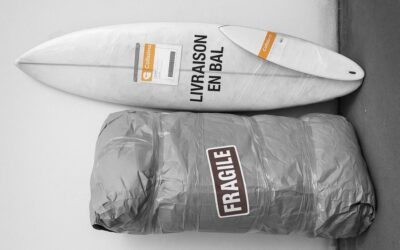Beaucoup de problèmes pendant le transport de colis (détérioration, casse, perte, erreur d’adressage) résultent d’un emballage mal adapté ou mal fait. La livraison est une étape cruciale pour le client, qu’il soit particulier ou professionnel, c’est la première impression qu’il retiendra de son achat auprès de votre entreprise. Voici quelques conseils pour vous aider réussir l’emballage de vos colis. Et avoir une bonne image de marque auprès de vos consommateurs

Pourquoi est-il si important de réussir son emballage ? – L’emballage est fait pour protéger votre marchandise jusqu’à destination ; – L’emballage est aussi le premier contact physique de votre marque avec votre client.
First step: choosing the right packaging
First of all, it is essential to choose the right packaging to protect your shipment properly.
Ce dernier doit être suffisamment rigide et solide pour pouvoir résister durant le transport. Jusqu’à 30 kg, une double cannelure suffit. Au-delà et jusqu’à 70 kg, optez pour une triple cannelure qualité lourde. Enfin, au-dessus de ces 70 kg, on passe à la palette et ce n’est plus pour My Flying Box.
As a reminder, My Flying Box sends packages up to 70kg!
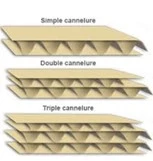
What about old packaging?
Évitez de les réutiliser. En effet, perdant de leur rigidité un peu plus à chaque transport, les cartons usagés protègent moins efficacement vos marchandises. Cela étant, s’ils semblent encore en bon état, ça peut être un plus de proposer un emballage de seconde main (sans le rendre obligatoire). Si l’écologie fait partie de vos valeurs, vos clients pourront être sensibles à ce geste.
Step 2: Set up your merchandise properly
Once you've found the packaging, you need to make sure the contents of your box are secure. That's where the padding comes in. Step 2: Set up your merchandise properly
Afin de protéger votre marchandise dans le colis, utilisez des matériaux comme : papier kraft, papier bulle, papier mousse, journal, tissu, minifrites en polystyrène, coussins d’air ou tous autres matériaux de calage.
If your business is the circular economy (see our article on e-commerce trends in 2021) and you still have the original packaging of your item, even better! Do something for the planet by using it. If you don't, don't worry, find professional quality protection and cushioning material from your usual supplier.
If you have several items in one box, place the heaviest item at the bottom of the box and spread the rest out. Also, be careful not to put two fragile items in contact in the same package.
Be aware that the mention "fragile" is most of the time useless: the transport being often mechanized, the machines will simply scan the information on the transport label.
💡 De l’art délicat d’envoyer des bouteilles Les bouteilles de vin sont une des marchandises les plus concernées par les dommages. Elles doivent être placées dans des compartiments à part et dans un emballage carton pour bouteilles de vin et idéalement recommandé et/ou certifié par le ou les transporteurs. En utilisant tout type d’emballage, vous vous exposez à un risque élevé de casse et à un refus de prise en charge du remboursement de votre envoi par le transporteur.
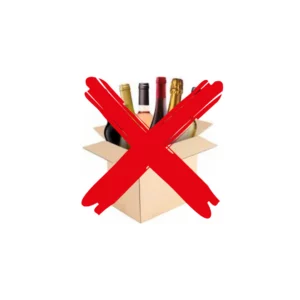
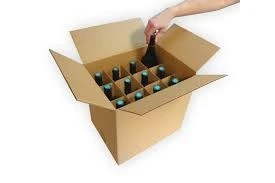
Step 3: Close the package properly
A well-sealed package will better protect your products during transport. If you want your package to be closed properly, it is essential to use special packing tape, brown or transparent tape of good quality (the same tape you used during your last move!). Feel free to use any type of tape, as long as it is wide and strong, in the Ideal 5mm width.
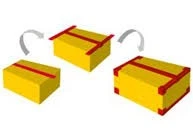
My Flying Box vous recommande la méthode en H, adaptée à tout type de colis, fragile ou non : placez le ruban sur toute la longueur du carton en haut et en bas, ainsi qu’aux 4 extrémités.
Si votre colis est mal fermé et qu’il s’ouvre durant son expédition, le transporteur n’assumera en aucun cas la responsabilité de la perte ou de la casse de votre envoi. De plus, pour ne pas gêner le transport, rien ne doit dépasser : les poignées, la ficelle et le kraft sont interdits car ces éléments pourraient gêner le transport de votre colis (DPD et Colissimo refusent d’ailleurs ce type d’emballage).
That's it! Your box is now ready to be labeled and shipped.
Last step: the packing slip
In order for your package to reach its destination, it must have a legible shipping label.
– Vérifiez qu’elle soit bien imprimée et bien attachée : son code barre doit être parfaitement lisible.
– Collez-la sur le dessus du colis, jamais dans un angle afin de ne pas couper le code barre.
– Retirez aussi toutes les anciennes étiquettes afin d’éviter la moindre confusion !
💡 L’utilisation de pochettes plastiques peut être un plus, car elles garantissent la protection de votre étiquette et des documents pouvant être joints à l’envoi (factures, descriptif du contenu si besoin, …).
Si l’acheminement de votre colis est mécanisé, votre envoi est aussi manutentionné à certaines étapes… ne serait-ce qu’au moment de la livraison (nous n’en sommes pas encore au Mode de livraisons du futur en référence à notre article de blog) !
My Flying Box recommends that you write the sender's and receiver's addresses and telephone numbers on your package. In the event that the label becomes detached, this information will allow the carrier to locate the package. This information must be clear and legible. The approximations and erroneous or incomplete information on the address can cause delays in delivery without engaging the responsibility of the carrier.
Les alternatives écoresponsables pour vos emballages 🌍
In our article of the month on les tendances de l’E-commerce en 2022I talk about the importance for e-retailers to take an ethical and sustainable turn, especially in terms of transport and packaging.
Aujourd’hui, 55% des Français se disent préoccupés par le sujet des emballages en plastique, qui pèsent lourd dans le bilan carbone (Observatoire société et consommation, 2019). La plupart sont prêts à payer un peu plus cher pour des contenants écologiques. 90% des Français sont favorables aux actions écoresponsable d’une entreprise et plus de la moitié des consommateurs affirment aujourd’hui que la recyclabilité, la durabilité et la biodégradabilité des emballages des colis constituent des facteurs importants dans leurs décisions d’achat.
💡 Find cartons that "fit" the dimensions of your products. By matching the size of your boxes, you will reduce the weight and volume of your packages, reduce your transportation costs and reduce your carbon footprint. As my middle school math teacher used to say, QED
💡 Certains transporteurs facturent au poids volumétrique : le poids facturé de votre colis sera calculé sur la base de son volume et non de son poids. Dans certains cas, il est même préférable parfois d’effectuer une expédition de 2, voire 3 colis, et d’éviter les nombreux désagréments d’un colis trop volumineux, encombrant (surcharge hors gabarit, difficulté de prise en charge par le livreur…).
En résumé, la réussite de la livraison ne dépend pas que du transporteur, mais aussi de la préparation des colis et de leur emballage (de votre côté donc) : cette préparation sera décisive quand à la confiance que vous octroieront vos clients. Plus de 70% des consommateurs considèrent que l’emballage reflète la qualité du matériel acheté et donc l’image du vendeur.


